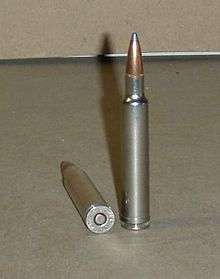Belted magnum

The term belted magnum[1] (some times also: belted case) refers to any caliber cartridge, generally rifles, using a shell casing with a pronounced "belt" around its base that continues 2 - 4 mm past the extractor groove.
This design originated with the British gunmaker Holland & Holland for the purpose of headspacing certain of their more powerful cartridges. Especially the non-shouldered (non-"bottlenecked") magnum rifle cartridges could be pushed too far into the chamber and thus cause catastrophic failure of the gun when fired with excessive headspace; the addition of the belt to the casing prevented this over-insertion. An example of an American adaption of this practice is seen in cartridges like the .458 Winchester Magnum, also a shoulderless heavy magnum.
Many subsequent cartridges of "magnum" nomenclature were based on the original .375 H&H cartridge, so over time the belt became something of a standardized attribute, expected as part of a 'magnum' cartridge. Many cartridge designs of the last century include this belt, but do not really require it.
In the last decade or so, there has been a trend toward beltless (rimless) magnums, virtually all of which are heavily shouldered designs that obviate the original motivation for a belt.
References
- ↑ Willis, Larry. "Reloading Belted Magnums". Retrieved 2016-07-18.